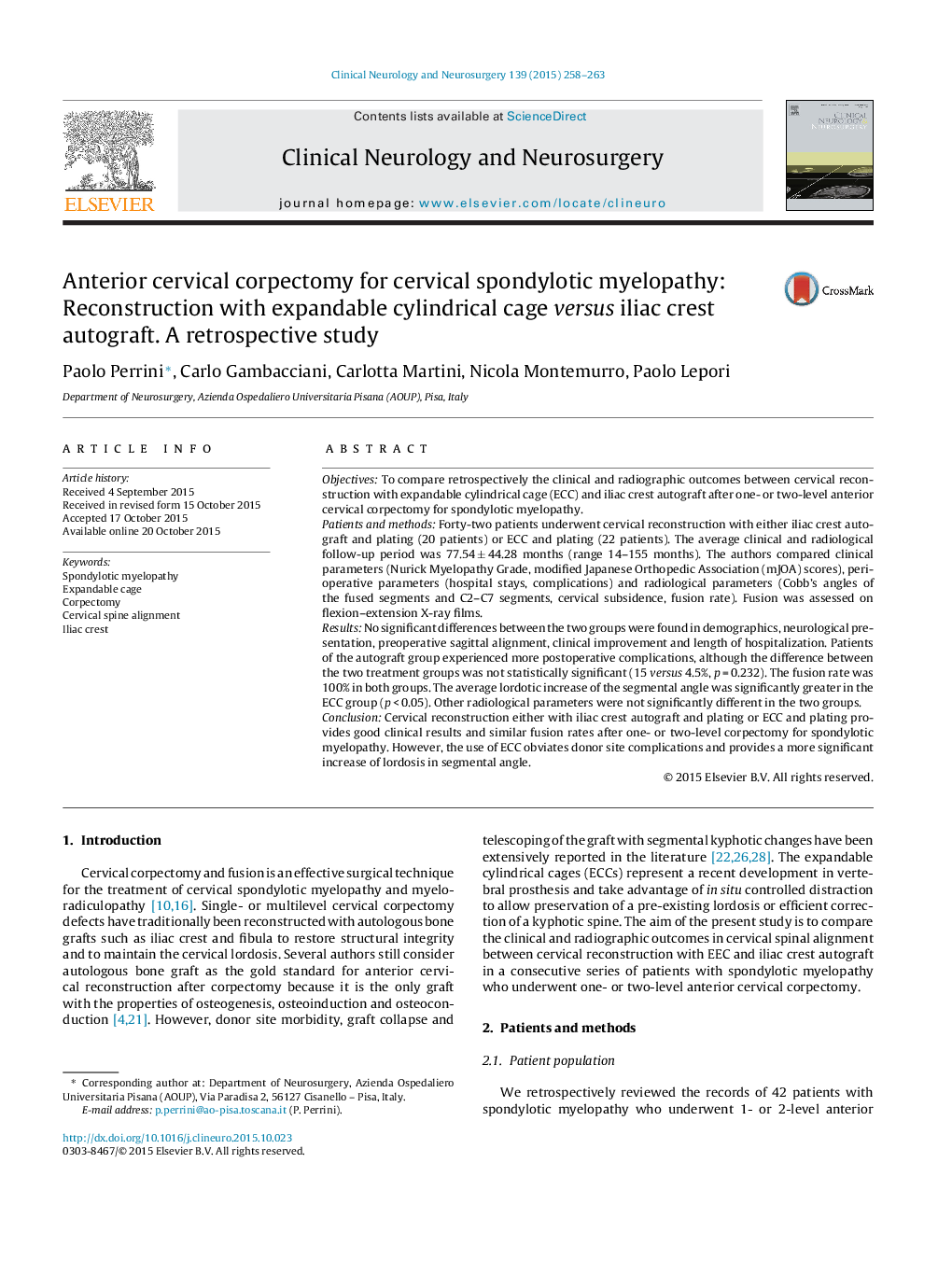| Article ID | Journal | Published Year | Pages | File Type |
|---|---|---|---|---|
| 3039794 | Clinical Neurology and Neurosurgery | 2015 | 6 Pages |
•Cervical corpectomy is effective for the treatment of spondylotic myelopathy.•Autograft has been long considered the standard for reconstruction after corpectomy.•The expandable cylindrical cages allow in situ controlled distraction.•Expandable cage provides significant increase of lordosis in segmental angle.
ObjectivesTo compare retrospectively the clinical and radiographic outcomes between cervical reconstruction with expandable cylindrical cage (ECC) and iliac crest autograft after one- or two-level anterior cervical corpectomy for spondylotic myelopathy.Patients and methodsForty-two patients underwent cervical reconstruction with either iliac crest autograft and plating (20 patients) or ECC and plating (22 patients). The average clinical and radiological follow-up period was 77.54 ± 44.28 months (range 14–155 months). The authors compared clinical parameters (Nurick Myelopathy Grade, modified Japanese Orthopedic Association (mJOA) scores), perioperative parameters (hospital stays, complications) and radiological parameters (Cobb's angles of the fused segments and C2–C7 segments, cervical subsidence, fusion rate). Fusion was assessed on flexion–extension X-ray films.ResultsNo significant differences between the two groups were found in demographics, neurological presentation, preoperative sagittal alignment, clinical improvement and length of hospitalization. Patients of the autograft group experienced more postoperative complications, although the difference between the two treatment groups was not statistically significant (15 versus 4.5%, p = 0.232). The fusion rate was 100% in both groups. The average lordotic increase of the segmental angle was significantly greater in the ECC group (p < 0.05). Other radiological parameters were not significantly different in the two groups.ConclusionCervical reconstruction either with iliac crest autograft and plating or ECC and plating provides good clinical results and similar fusion rates after one- or two-level corpectomy for spondylotic myelopathy. However, the use of ECC obviates donor site complications and provides a more significant increase of lordosis in segmental angle.
